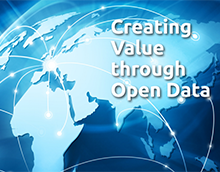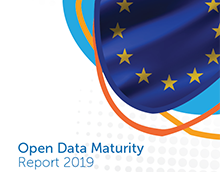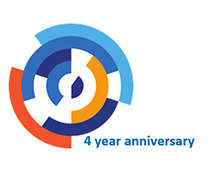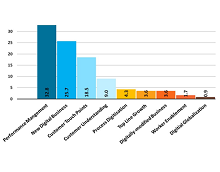Rasta 253 rezultatai (-ų)
Skip results of view Duomenų istorijos

- Data Story
The Analytical Report mentioned in this article has now been published. See the updated Featured Highlight here Introducing the Open Data Maturity 2018 Report's Top Three Performers Next week, the European Data Portal (EDP) will publish a new analytical report on Open Data best practices in Europe's Top Three Performers. This report offers a practical guidebook for policy makers and portal...

- Data Story
Open energy data Open energy data is one of the European Data Portal's (EDP) most popular data domains due to its implications in the energy and environmental sector. With growing awareness of topics such as climate change and renewable resources and initiatives to increase energy efficiency, governments around the world are introducing directives and targets focusing on energy data. One example...

- Data Story
Introduction to B2G data sharing Data sharing is a key enabler of growth, employment and competitiveness for Europe and the Digital Single Market envisaged by the European Union. The non-rivalrous nature of data, combined with technological innovations such as the availability of big data analysis and artificial intelligence applications, enable maximising the value of data. Re-using data can save...

- Data Story
Open data in Europe Most national governments in Europe have developed an open data agenda and have established open data portals supported by solid open data policies and strategies. In 2019, an overall maturity of 74% was achieved by the EU28 in terms of policy maturity (visible on the ODM dashboard), indicating that Member States have developed a strong foundation in terms of their open data...

- Data Story
The European Data Portal (EDP) team wishes you all a Happy New Year! We are looking forward to continuing collaborating and discussing open data related topics and trends with you in the new year. In 2020, the EDP will continue to share events, highlights and news on our website, organise webinars and publish research findings around open data. EDP Highlights in early 2020 are: Publication of our...

- Data Story
On 2 December 2019, the European Data Portal published its Open Data Maturity Report 2019. The report is the fifth annual study and serves as a benchmark to gain insights into the development achieved in the field of open data in Europe. It assesses the level of maturity against four dimensions: policy, portal, impact, and quality. The study clusters countries into four different groups: trend...

- Data Story
Join us in celebrating four years of open data on the European Data Portal (EDP)! Thank you to the open data enthusiasts, publishers, re-users, and to all our readers and subscribers for following our news, events, articles, and reports. We invite you to continue sharing your valuable experiences, insights, and opinions with us. Four years ago, the EDP beta version was launched and started with...

- Data Story
Now that the spring is showing itself again with rising temperatures and less rain, it is time to go outside and enjoy all spring has to offer. Children can enjoy a fresh breeze of air while going down the slide. Have you ever wondered which city in Europe is most child friendly in terms of number of playgrounds. Based on Open Data on playgrounds in various cities, you can now look this up...

- Data Story
Digital Transformation is the increasing adoption of digital tools and technologies by any organisation to fundamentally enhance both its internal and external processes and functions. It consists of three key areas every organisation needs to focus on: customer experience, operational process and business model. In order to study the relation between Open Data and Digital Transformation, more...

- Data Story
The European Data Portal harvests data portals from 32 European countries. This leads to a total of over 400,000 datasets spread over a number of catalogues. Examples of portals that are harvested are: national data portals, national geo data portals, regional portals and local portals. Have you ever wondered which country actually had the most Open Data made available on the European Data Portal...
